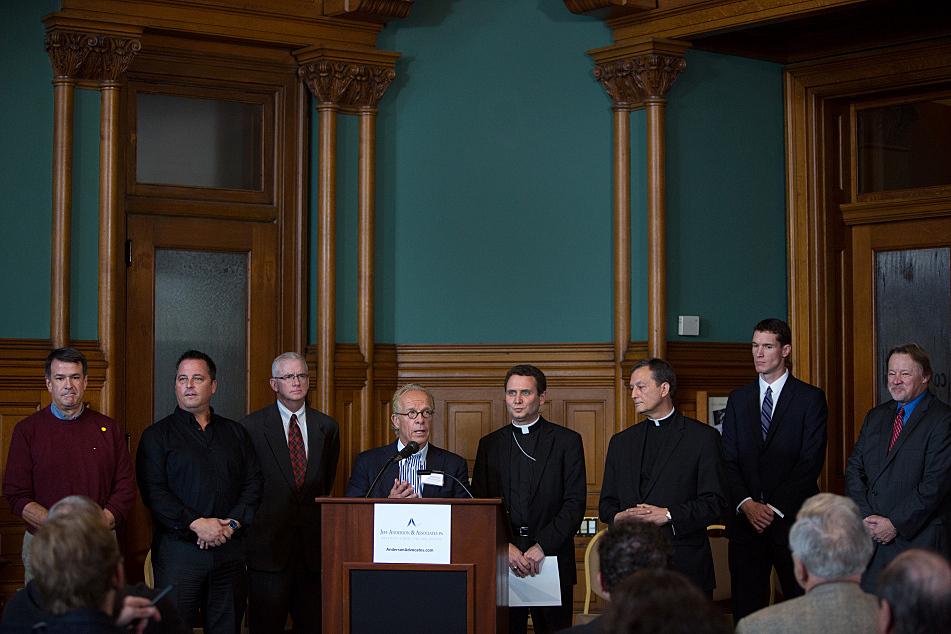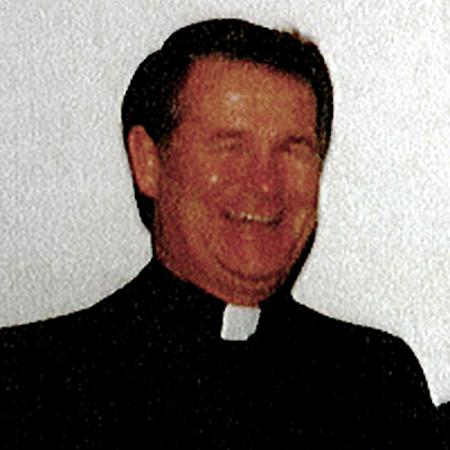|
Clergy sex abuse settlement: The case -- and the law -- at a glance
Minnesota Public Radio
Attorneys for a victim of clergy sexual abuse settled a landmark public nuisance lawsuit Monday against the Archdiocese of St. Paul and Minneapolis and the Diocese of Winona. St. Paul attorney Jeff Anderson filed the suit last year in Ramsey County on behalf of a man who said he was sexually abused as a child by the Rev. Thomas Adamson in the late 1970s. Adamson, who served in the Twin Cities archdiocese and the Winona diocese, is no longer a priest. The lawsuit accused the Twin Cities archdiocese and the Winona diocese of creating a public nuisance by keeping information on abusive priests secret. Anderson and his colleague Mike Finnegan argued in court that the secrecy placed children at risk of abuse from unknown offenders. Those claims were bolstered by MPR News stories last fall that showed how top church officials continued to protect priests accused of abuse. The Doe 1 caseAt the end of May 2013, an alleged victim of the Rev. Thomas Adamson sued the Archdiocese of St. Paul and Minneapolis, the Diocese of Winona and Adamson for negligence and creating a public nuisance that puts children at risk. It was the first suit brought under Minnesota's new Child Victims Act. The lawsuit alleges that Adamson abused the victim, Doe 1, while he was an altar boy at St. Thomas Aquinas Catholic Church in St. Paul Park, in 1976 and 1977. It says the victim's father reported the abuse to the archdiocese's chancellor, but that church leaders failed to report Adamson to police. Unlike a standard negligence case, the public nuisance argument allowed Anderson to obtain more than 50,000 pages from the files of every priest accused of abuse dating back decades — over the objections of a team of church lawyers who argued that the information was not relevant and could ruin the reputations of innocent men. • Adamson's assignment history, allegations and current status
The lawsuit accuses the church of:
In 1987, Adamson was at the center of the first clergy sex abuse scandal in the Twin Cities archdiocese. Memos made public that year showed that Winona Bishop Loras Watters and Twin Cities Archbishop John Roach knew of allegations against Adamson and failed to call police. The scandal led to landmark financial settlements in the late 1980s and early 1990s for several Adamson victims. More victims have come forward since then. Adamson, who is no longer a priest and lives in Rochester, has admitted under oath to many of the abuse allegations. "I always felt it was a problem that I could control or live with," he said in a 1986 deposition. Domino effects
The case has triggered a handful of domino effects in the 17 months since the case was filed. "Failing to disclose information about an accused priest is akin to, and conceivably more offensive and dangerous, than other acts that have been considered public nuisances," Van de North wrote, citing nuisance examples including keeping "worrisome dogs," "maintaining houses of prostitution" and swearing in public.
• Depositions of church leaders: Current and former church leaders — Archbishop John Nienstedt, retired Archbishop Harry Flynn, former vicar general Rev. Kevin McDonough, former vicar general Rev. Peter Laird, former chancellor Jennifer Haselberger, former chancellor (and current St. Louis archbishop) Robert Carlson — and Thomas Adamson himself testified under oath, often offering conflicting accounts of the church's approach and actions in dealing with abuse claims. • Bankruptcy warnings: Documents released in early October 2014 show the Diocese of Winona expects to file for bankruptcy because of clergy sex abuse lawsuits. Bankruptcy has been discussed as an option for the Archdiocese of St. Paul and Minneapolis throughout the life of the case. Minnesota's Child Victims ActToday's settlement is part of the first lawsuit brought under Minnesota's Child Victims Act, which was enacted in May 2013. The Child Victims Act:
• Lifts the civil statute of limitations for new cases of sexual abuse against children Before the Child Victims Act was passed, Minnesota state law, as interpreted by its Supreme Court, required victims of child sexual abuse to file any lawsuits before they reach age 24. Many victims of sexual abuse and their supporters say that is not enough time. Victims often keep abuse secret for decades, and it can take years to realize that other problems, such as intimacy issues, depression or drug addiction, stem from childhood sexual abuse. Notwithstanding any other provision of law, in the case of alleged sexual abuse of an individual under the age of 18, if the action would otherwise be time-barred under a previous version of Minnesota Statutes, section 541.073, or other time limit, an action for damages against a person, as defined in Minnesota Statutes, section 541.073, subdivision 1, clause (2), may be commenced no later than three years following the effective date of this section. This paragraph does not apply to a claim for vicarious liability or respondeat superior, but does apply to other claims, including negligence. The evolution of the law: • Feb. 2013: Child Victims Act is proposed • May 1, 2013: Passes the House with 115 votes in favor, 7 opposed • May 8, 2013: Unanimously passes the Senate • May 29, 2013: St. Paul attorney Jeff Anderson files the first lawsuit under the Child Victims Act: Doe 1 v. Archdiocese of St. Paul and Minneapolis, Diocese of Winona and Thomas Adamson The case: An alleged victim of the Rev. Thomas Adamson sued the Archdiocese of St. Paul and Minneapolis, the Diocese of Winona and Adamson for negligence and creating a public nuisance that puts children at risk.
|
.
Any original material on these pages is copyright © BishopAccountability.org 2004. Reproduce freely with attribution.

